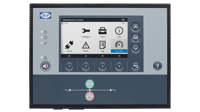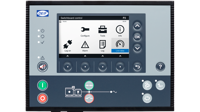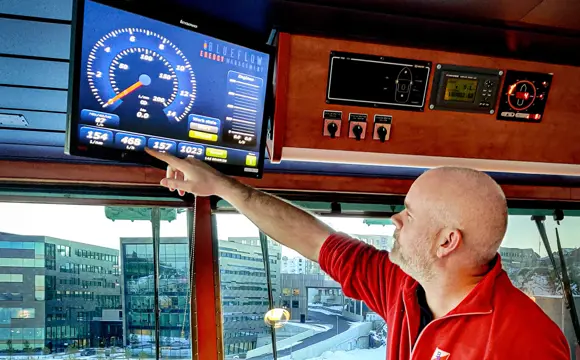How you can benefit from shore connections
Exhaust emissions from ships in port are widely considered a significant safety hazard to ship and port employees, and to residents living near port areas. The harmful effects of NOx, SOx, and particulate matter emissions are well documented, and authorities the world over are taking steps to reduce vessel exhaust emissions while in port. The use of shore connections (also known as cold ironing, land power, alternative marine power, and shore power) is one such step, and a very effective way of achieving this goal.
What does a shore connection do?
With a shore connection, shipboard equipment from cranes and winches to lighting and fans is powered from the local power grid (typically through a medium or high voltage shore side installation) instead of using shipboard auxiliaries or generators, allowing these engines to be shut down. As grid power is usually generated at highly efficient plants far from the port, this is a major step towards cleaner port air. Grid power may even come from emission-free sources such as hydro power or wind turbines, further reducing general environmental and climate impact. In addition, shore connections offer financial benefits as they reduce fuel consumption and auxiliary/generator wear.
Solutions being adopted globally
Given these benefits, it is not surprising that countries, regions, and local authorities globally have introduced port emissions requirements that require ships to use emission-free propulsion technologies or run on grid power via shore connection while berthed. In the USA, for example, the state of California now requires all affected fleet operators to reduce at-berth NOx and particulate emissions from their vessels by at least 80 percent, for example by using shore connections. From 1 January 2021, cruise ships in China should use shore power when berthing for more than 3 hours if onshore power supply capacity is available. And in the European Union, Directive 2014/94/EU says that shore-side electricity supply shall be installed as a priority in ports of the Trans-European Transport Network (TEN-T) core network by 2025.
Three tips for choosing a shore connection solution
As global adoption continues, ships calling at ports that require the use of shore connections are required to install shore connection solutions onboard. This may well apply to you – if not now, then within the foreseeable future. But what factors should you consider when shopping for shore connection solutions? Here are three tips to get you started:
- Convenience and user friendliness: It is important that connection and disconnection operations are handled with no interruptions in power delivery to ship equipment. Disconnecting all onboard equipment and starting it up again when the connection cable has been plugged in is inconvenient and time-consuming. A power management system, by contrast, can automatically synchronise the land power source with onboard generators and then automatically transfer the load to the land power source and shut down the shipboard generators. This is a far more user-friendly solution which increases the likelihood that it will be used consistently!
- Compliance with relevant regulations: Before selecting a shore connection solution, get an overview of the shore side installations in the ship’s operating area. What is the capacity of the installations you will be using, and what requirements and regulations does your ship need to comply with? For example, does your vessel require 50 or 60 Hz of power, and what plug size do you need? We recommend getting a solution that complies with the international IEC/ISO/IEEE 80005 standard, but it all comes down to what you need in daily operations.
- Support and assistance: Select a solution from a credible supplier with the necessary experience and know-how to deliver a product that works. Also make sure that timely technical support is always available when you need it: Lost working hours due to technical issues quickly add up to significant losses, especially if you need to stick to schedules or timetables, or if you are carrying time-sensitive cargo.
Contributing to green transformation in the maritime sector
The maritime sector is working actively to contribute to the global green transformation and reduce climate impact. For large vessels, viable alternatives to traditional propulsion technologies are still some years into the future because of the sheer tonnages and distances involved. In ports, however, it is a different story: Shore connection technology is mature and available, and it is increasingly being used in ports the world over. Ship owners eager to reduce their climate footprint, comply with port emissions regulations, save on engine operating hours, and boost their green image can get started today!
-

Contact us to discuss your options
- 90 years of energy pioneering
- Manufactured at the highest standards
- Superior quality
- Unmatched service and support
- Made in Denmark





![Website Top Photo (1920X1080)[2567]](https://deif-cdn-umbraco.azureedge.net/media/4tlhmk2k/website-top-photo-1920x1080-2567.jpg?rxy=0.3408058164192669,0.4284018164237016&width=580&height=360&v=1da9151db0c0ef0&v=9)
